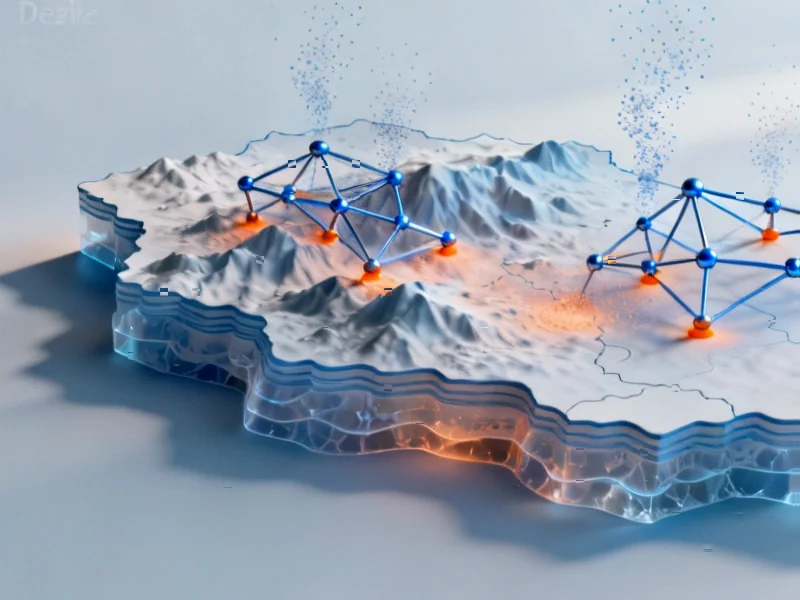Groundbreaking Radon Mapping in Ethiopian Urban Center
Scientific reports indicate that Dessie town in Ethiopia faces potential public health concerns from naturally occurring radon gas, with new mapping revealing significant concentration variations across the urban landscape. According to the study published in Scientific Reports, this represents the first comprehensive investigation of geology-based radon health risks in the area, despite the known presence of radon-emitting basaltic rocks in the region’s geological formations.
Table of Contents
Radon Distribution Patterns Identified
The research team employed advanced geological and geospatial techniques, utilizing geological formation data from the Ethiopian Geological Institute combined with Quantum Geographic Information Systems (QGIS) software. Analysis suggests radon gas activity concentrations fall into two distinct ranges based on different emanation coefficients, with the distribution map revealing multiple potential hotspots marked by differently colored circles.
Sources indicate that the geological composition of Dessie town primarily consists of basaltic rocks alongside undifferentiated alluvial, elluvial, and lacustrine deposits. The report states that uranium concentrations in basalt rock typically range from 0.1 to 1 ppm globally, which directly influences radon generation potential through the decay of radium elements.
Health Implications and Risk Assessment
Scientific analysis suggests prolonged exposure to elevated radon levels presents significant health concerns, particularly regarding lung cancer risk. The study identifies nine monitoring stations where health-related problems may exist due to extended radon exposure. Researchers note that radon represents the second leading cause of lung cancer after smoking worldwide, accounting for 3-14% of all lung cancer deaths according to various studies.
Analysts suggest the findings are particularly concerning given Dessie’s rapid urbanization and population growth, which could increase potential exposure risks in developing residential and commercial areas. The report emphasizes that while outdoor radon typically dilutes quickly, indoor accumulation in enclosed spaces poses the greatest health threat.
Geological Factors Influencing Radon Movement
The study highlights how local geological characteristics significantly impact radon transport and accumulation. According to the research, factors including rock permeability, soil porosity, geological structure, and topography directly affect how radon moves through subsurface environments. Soils and rocks with higher permeability, such as sandstones and limestones, reportedly allow radon to move more freely through larger pores and fissures.
Environmental conditions also play a crucial role in radon behavior, analysts suggest. Soil moisture levels significantly influence radon’s permeability and diffusion capacity, with wet soil potentially acting as a barrier to radon gas diffusion. Climate factors including temperature, humidity, precipitation, and barometric pressure all contribute to seasonal and diurnal variations in radon concentrations.
Research Context and African Radon Studies
The report states that research on outdoor radon levels in Africa remains scarce compared to other regions, creating significant knowledge gaps in public health assessment. Previous studies in South Africa’s West Rand area recorded outdoor radon levels significantly higher than global averages, with remarkably high readings noted from gold tailings dams. Similar research in Tanzania near uranium deposits also identified elevated concentrations.
In Ethiopia specifically, seasonal fluctuations of radon gas reportedly peak during cooler winter months and reach lowest levels in warmer summer periods. However, analysts suggest the annual variation of outdoor radon gas concentration appears statistically insignificant based on available data.
Methodological Approach and Future Recommendations
The research team integrated the study area’s weather conditions and geological data using shape files and geological map masking techniques. The geospatial strategy incorporated permeability and emanation coefficient modeling to identify radon-prone areas and calculate Geogenic Radon Potential (GRP).
The report concludes by recommending experimental measurements for more accurate assessment of radon gas activity concentrations and their health impacts. Researchers emphasize that addressing the comprehensive radon data gap in Dessie town using geological and geospatial techniques is crucial for developing evidence-based mitigation strategies and protecting public health in the rapidly developing region.
Related Articles You May Find Interesting
- New Platform Makes Advanced Protein AI Accessible to All Researchers
- Breakthrough in UV Detection Technology with Silicon-Zinc Oxide Bilayer Design
- Breakthrough in Artificial Skin Technology Achieves Human-Level Sensory Resoluti
- Apple’s MacBook Pro Embraces User Feedback in Design Evolution
- Industrial Waste Transforms Concrete: Red Mud and Recycled Aggregates Boost Sust
References
- http://en.wikipedia.org/wiki/Soil_moisture
- http://en.wikipedia.org/wiki/Permeability_(Earth_sciences)
- http://en.wikipedia.org/wiki/Radium
- http://en.wikipedia.org/wiki/Geological_formation
- http://en.wikipedia.org/wiki/Basalt
This article aggregates information from publicly available sources. All trademarks and copyrights belong to their respective owners.
Note: Featured image is for illustrative purposes only and does not represent any specific product, service, or entity mentioned in this article.



